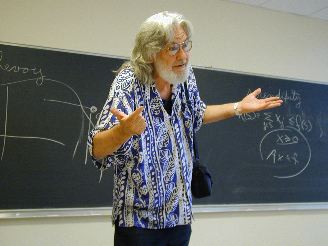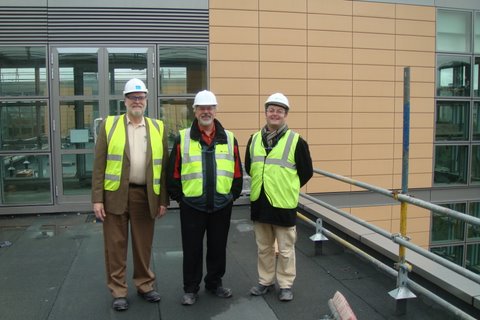From the INFORMS Blog:
I just got back from the Fellows Luncheon. The INFORMS Fellows are recognized for having made significant contributions to the field of operations research and the management sciences (be it in research, practice, service, administration, or education). It is an extremely impressive group, and I very much enjoy the lunch, since conversation around the table is generally both insightful and entertaining.
I was President of INFORMS the year the Fellows program began, so I got to welcome the inaugural group. To get the Fellows program started off, some classifications of people were automatically made Fellows. So, for instance, all the past winners of the John von Neumann Theory Prize were automatically made Fellows. When it came to past Presidents of the organization, the rule was pretty explicit:
[Fellows would be] all past Presidents of TIMS, ORSA, and INFORMS up to but not including Michael Trick (*)
Ummmm… OK. I think I was the only person explicitly declared not to be a Fellow! It made sense at the time “Don’t want to vote for yourself, you know!”, and they did make me a Fellow a few years later.
Now, no one gets in automatically: every new Fellow is selected by the Selection Committee. This year’s class is a very impressive group: Aharon Ben-Tal, Srinivas Bollapragada, Margaret Brandeau, Awi Federgruen, Nimrod Megiddo, David B. Montgomery, Michael Pinedo, Kathryn E. Stecke, John Tomlin, Garrett van Ryzin, and C.F. Jeff Wu. The fact that eleven were made Fellows is not arbitrary: the number is limited by a certain fraction of the size of the membership. When I checked the list of Fellows, I was struck by some of the amazing people who are not yet Fellows: we still have years and years of amazing classes to induct.
You get to be a Fellow by getting nominated, and then getting elected by the selection committee (which is voted on by the current Fellows). If you know someone who should be a Fellow (or think you should be!), the next round of nominations will be due next summer.
A few points that struck me during the lunch
- The more members we have, the more Fellows we can elect; this process would be easier if we had more members
- It would be nice for Fellows to do something more than have a nice lunch and beget more Fellows: the group is a great, underutilized resource
- It was fantastic to see a number of the older Fellows who came in specially for the lunch. Our field has a great history (and future!) and it was good to be reminded of that history with the extremely impressive people in the room.
(*) Not the exact wording, but it was pretty close to that!
 You have to love a place with a Faculty of Mathematics and a 29 faculty strong Department of Combinatorics and Optimization. I was particularly attached to C&O and was inspired to enter the field of operations research due to the training I got there. I was strongly affected by two faculty members on the opposite sides of practically any spectrum. The first was Jack Edmonds, who founded combinatorial optimization with his work on matchings and his recognition of the key divide between polynomial and exponential algorithms. While that work was done in the 1960s, Jack has remained a prolific and influential researcher to this day. From Jack, I learned the beauty of this field.
You have to love a place with a Faculty of Mathematics and a 29 faculty strong Department of Combinatorics and Optimization. I was particularly attached to C&O and was inspired to enter the field of operations research due to the training I got there. I was strongly affected by two faculty members on the opposite sides of practically any spectrum. The first was Jack Edmonds, who founded combinatorial optimization with his work on matchings and his recognition of the key divide between polynomial and exponential algorithms. While that work was done in the 1960s, Jack has remained a prolific and influential researcher to this day. From Jack, I learned the beauty of this field.